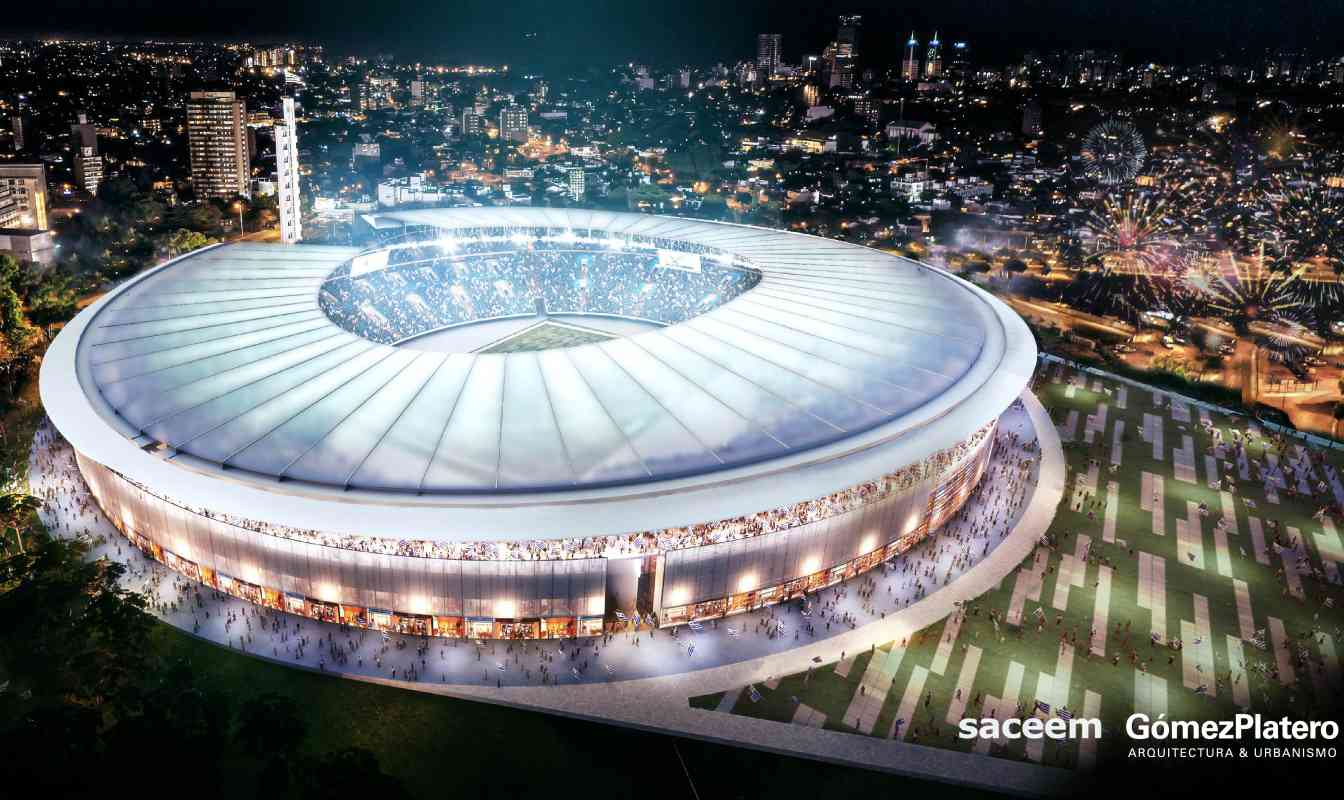World Cup 2030: Stadium for the final unveiled by Uruguay
source: StadiumDB.com; author: Maciek Ściłba
 The battle for the right to host the 2030 FIFA World Cup is gathering pace. Uruguay has a huge appetite for the opportunity to host the tournament. The country's government has just unveiled the plans for modernisation of the first venue in its bid.
The battle for the right to host the 2030 FIFA World Cup is gathering pace. Uruguay has a huge appetite for the opportunity to host the tournament. The country's government has just unveiled the plans for modernisation of the first venue in its bid.
Advertisement
Will the FIFA World Cup return to its origins?
At the end of 2024, we will know the countries that will host the competition, which will take place in less than six years. There are two candidates in the race to organise the event - Spain, Portugal and Morocco; as well as four South American countries - Uruguay, Argentina, Chile and Paraguay. Many fans dream that, on the centenary of the first World Cup in 1930, the event will once again come to Uruguay. It was this small country lying between Brazil and Argentina that hosted the first tournament in history to determine the best football team in the world.
Each week there are fewer and fewer unknowns about the competing applications. Recently, the Uruguayan government showed a rendering of the first stadium included in its application. Without surprise, it turned out to be the legendary Estadio Centenario. This arena hosted 10 of the 18 matches of the first World Cup in 1930, including, of course, the final between the hosts and Argentina. La Celeste defeated their neighbours 4:2 to win the first of two World Cup titles in their history - a success they repeated 20 years later in a tournament played at Brazilian venues.
Estadio Centenario was built in just eight months. Its construction began shortly after Uruguay was awarded the right to host the World Cup. It is interesting to note that the opening match took place five days after the start of the competition - on July 18 1930 to be exact. The teams whose clash wrote the first chapter of the arena's history were Uruguay and Peru. The encounter ended in a modest 1-0 victory for the hosts, with Héctor Castro scoring the opening goal. On that day, 57,735 spectators sat in the stands of the stadium. The current Centenario attendance record, however, was set during the semi-final match between Uruguay and Yugoslavia and stands at 79 867 spectators. It is worth mentioning that La Celeste won this meeting by as much as 6:1. The final cost of building this facility at the time was $1 million.
 © Gómez Platero Architecture and Urbanism
© Gómez Platero Architecture and Urbanism
The legendary facility will undergo an upgrade
After 100 years since that event, the Uruguayan authorities want the Estadio Centenario not only to host the 2030 World Cup matches, but also to host the final of the competition. Reports indicate that the rest of the South American candidate countries have agreed to this arrangement. This also means that the Centenario will not only be extensively rebuilt, but also enlarged. The number of seats is set to grow significantly. The arena is about to have 80,000 seats, all of which are to be fully covered.
The issue of building a roof on a venue that has never had a canopy in its previous history is important because of the weather conditions. The 2030 World Cup will traditionally be played in June and July. It is then the middle of winter in Uruguay, with temperatures averaging 15 degrees during the day. These are also the months when rainfall is at its highest. You can therefore be almost certain of images from 2010 when players on the substitutes' benches during the World Cup in South Africa sat in down jackets.
The author of the Estadio Centenario redevelopment project is a Montevideo-based architectural studio headed by Martín Gómez Platero. The office's portfolio is mainly public buildings, shopping centres, hotels, hospitals, schools, railway stations and airport terminals. However, sports facilities such as the Estadio Gran Parque Central, among others, can also be found. For the moment, the potential cost of upgrading the stadium to potentially host the 2030 World Cup final is unknown. It is likely to be known only when the rights to host the tournament are eventually awarded, at which point all bidding procedures should begin.
 © Gómez Platero Architecture and Urbanism
© Gómez Platero Architecture and Urbanism
Advertisement
 StadiumDB
StadiumDB